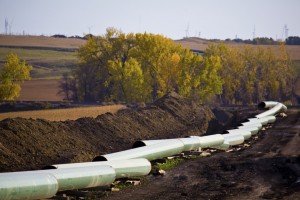By Dick Belliveau, Induron Sales Rep
 Flip a switch and a light goes on, turn up your thermostat and your house gets warm. Magic, right! But how does the energy get from the power plants or oil fields to your home?
Flip a switch and a light goes on, turn up your thermostat and your house gets warm. Magic, right! But how does the energy get from the power plants or oil fields to your home?
Whether it’s a transmission line or a gas and oil pipeline, there’s got to be a way for that energy to reach you – it’s a requirement in today’s world. Sometimes the “old” way that energy is transported, either by pipe lines or power lines, is actually “greener” than the alternative. What do I mean? Conventional means of power transmission actually result in a smaller carbon footprint than shipping, rail and especially trucking. It might seem counterintuitive, but a lot in life is.
The public needs to be made aware of all of the costs associated with delaying, stalling and/or rerouting energy transmission projects, such as the Keystone Pipeline or power line projects from rural wind farms to urban population centers. None of these changes are free, and the people paying their electricity bills (you and me) are the ones paying the cost.
This article from the New York Times raises some interesting questions.
So, turn on a light and heat or cool your home, but notice when your bill is higher at the end of the month. Notice when your utility needs to raise its rates. Notice when you pay more at the gas pumps. Ask yourself – was the added cost worth it?




